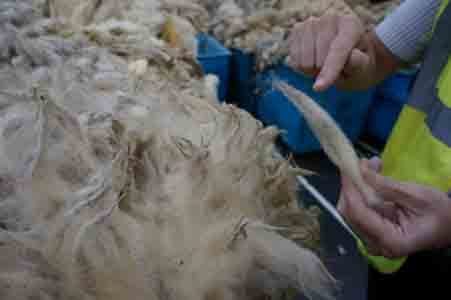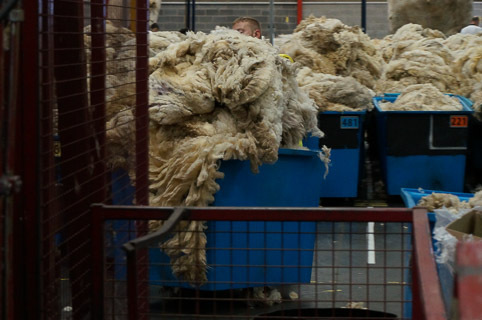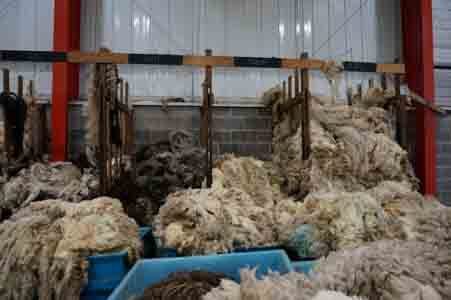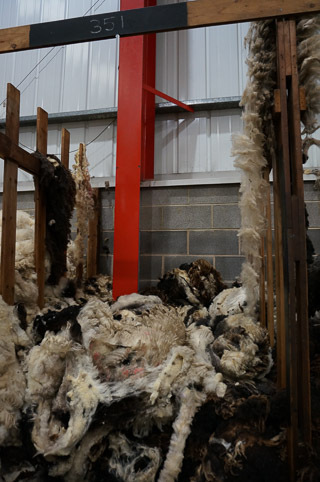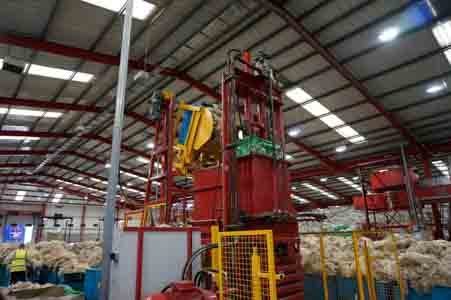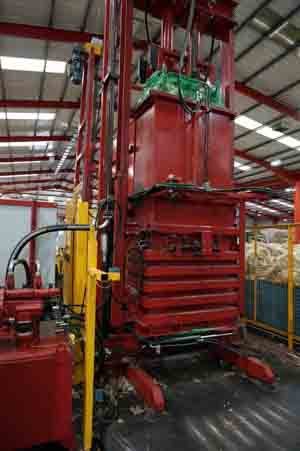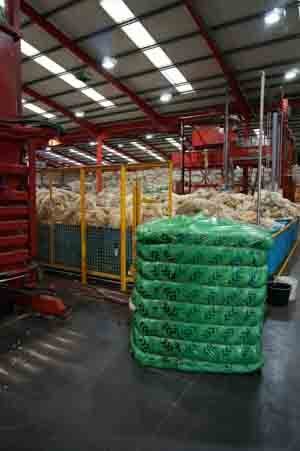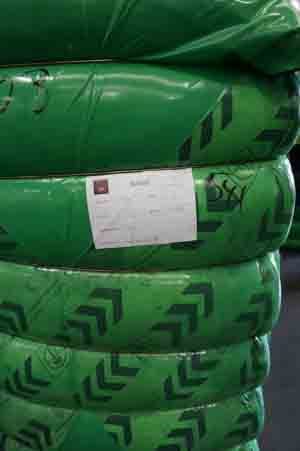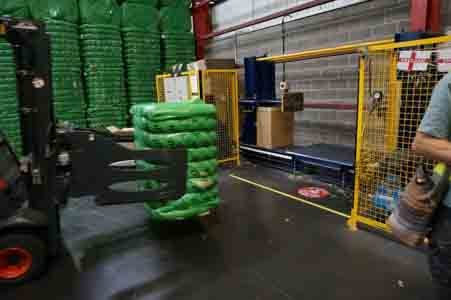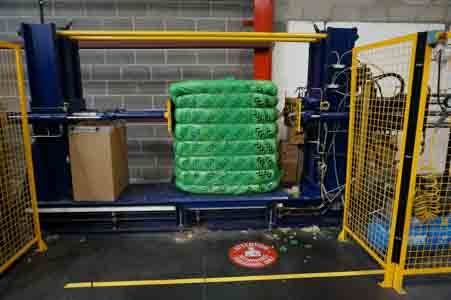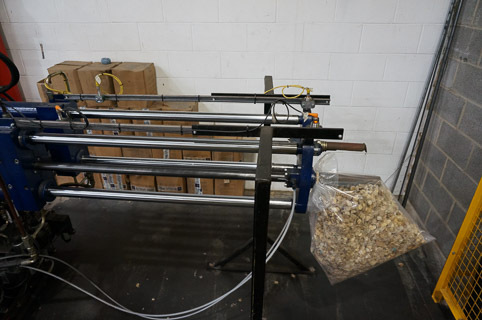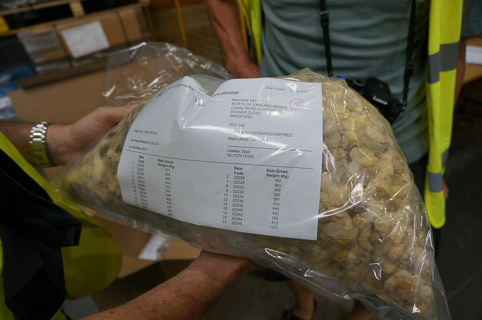The British Wool Marketing Board, part 2
Continued from yesterday, a visit to the British Wool Marketing Board, in Bradford, West Yorkshire, England. . . .
___
Graders are looking at length, color, strength, and cleanliness of the fleece. For example, if there’s too much vegetable matter, the wool goes into a bin with the correct grade number followed by a V.
Trolleys are carefully labeled and organized by grade.
Along one wall are some vertical holding areas for unusual wools: colored, and so forth. There aren’t as many of these types of wool so they take longer to accumulate and be ready for the next phase of management (baling). The Bluefaced Leicesters were in this area.
So were the Jacobs.
Once there are a number of trolleys of a particular type, their contents are dumped into a baler. See the little bright blue bit in the yellow mechanism at the top of the baler? That’s a trolley, being upended.
You can see its next motion here. There were two balers. On one, the trolleys emptied with one tip-and-bounce. On the other—perhaps a greasier type of wool—it took five or more tip-and-bounces to empty each container. I didn’t have an opportunity to count how many trolleys go into a bale. I can reverse calculate the amounts from my notes, but that will delay this post. . . . It’s a significant quantity. . . .
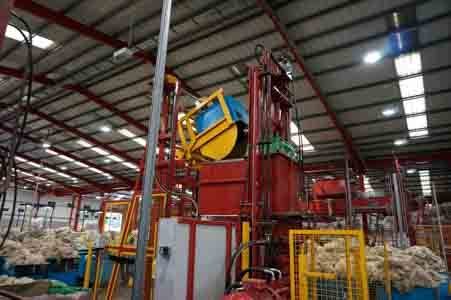
The wool is compacted into the bale.
Wires are wrapped around it loosely, and when the bale comes out of the baler the simple expansion of the wool tightens the wires.
Each bale gets a label. . . .
and is then transported to the coring unit, which will be used to test the quality of the bale. This generates the information on which the buyers at the auction base their bids.
The pressure plate on the left simply pushes the bale up against the coring mechanism on the right, which has an outer cutting edge that removes a section of plastic and an inner boring device that goes all the way through the bale and extracts a section of the wool for testing.
This is what the core selection looks like just after it’s been bored out.
This is a core sample labeled and ready to go to the lab for analysis.
And now a couple more photos of the main area. This is right by where the graded and sampled wool is stored, pending its sale at auction and delivery to the buyer.
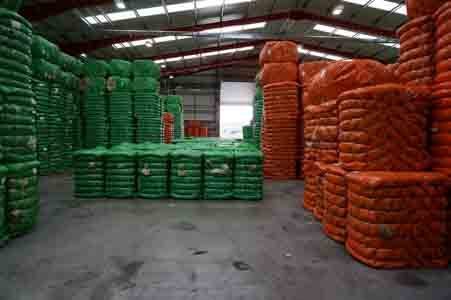
And I like this one, close to where we came into the warehouse, because it catches a glimpse of so many aspects of the wools’ travel through the area.
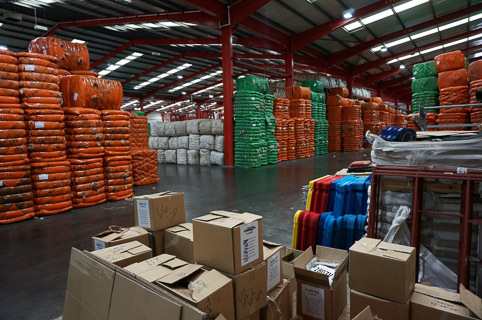
By the way, there appear to be just over a dozen very skilled people running this entire operation, with some seasonal help to, for example, move trolleys around. That includes both office and warehouse staff. It’s pretty amazing.

